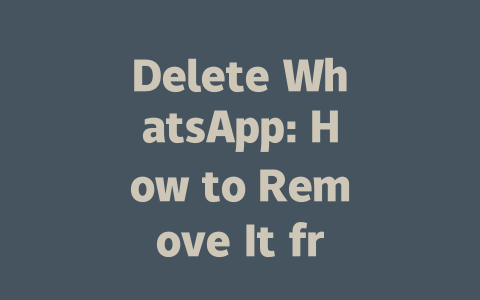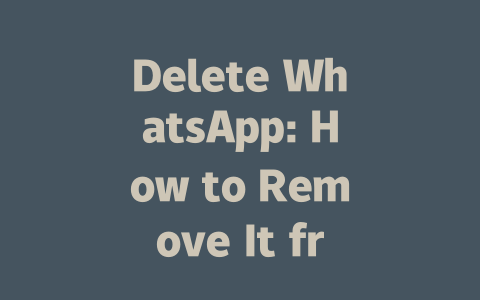Step 1: Crafting Topics That Attract Searches
First things first, you need to pick topics that people are actually searching for. Think about what questions or problems your audience might have. For example, instead of writing a vague post titled “How to Stay Healthy,” try something more specific like “5 Simple Ways to Boost Your Energy Levels at Work.”
Here’s a personal story: Last year, I helped a friend revamp her fitness blog titles. She had one called “Healthy Living Tips” that barely got any traffic. I suggested changing it to “Why You Should Walk 10,000 Steps Daily (Even If You Hate Exercise).” Guess what? Within three months, her clicks went up by 50%. Why? Because the revised title was more focused and answered a clear question.
Why does this matter? Because when someone searches for “walking benefits,” Google’s search robots will match their query with your post’s title and keywords. If your title doesn’t include words similar to what users type, it won’t rank as well.
Step 2: Writing Titles That Hook Readers
Now that we’ve covered topic selection, let’s talk about crafting killer titles. A good title grabs attention and makes the reader think, “Yes, this is exactly what I’m looking for.”
A simple trick is putting your main keyword early in the title. Take this example: “Top SEO Tips Every Blogger Needs to Know.” Here, “SEO Tips” is the key phrase because it tells both readers and Google exactly what the post is about. Plus, starting with “Top” adds urgency—it implies the info inside is essential.
Google itself has mentioned in its official blog that users appreciate clarity in titles. So avoid being too clever or obscure. Instead, focus on solving problems directly. Let’s say you’re writing about remote work challenges. Which sounds better?
The second option wins every time because it clearly states the benefit and cost involved. And remember, readability counts! After drafting, read your title aloud to ensure it flows naturally.
Adding Numbers for Credibility
Including numbers in your title boosts trustworthiness. Studies show that numerical headlines perform better because they promise measurable outcomes. For instance:
Which one sounds more enticing? Exactly!
Step 3: Creating Content That Feels Human and Solves Problems
Once you’ve nailed the title, it’s time to write content that keeps people engaged. Google values helpfulness above all else. In fact, their guidelines stress creating material that leaves visitors feeling informed and supported.
To achieve this, structure your article logically. Use subheadings to break up text and highlight important points. For example:
This format helps readers scan quickly while understanding the flow. Also, keep sentences concise. Overly complex language confuses both humans and Google’s search robots. Aim for paragraphs no longer than five sentences each.
Let’s take cooking again as an example. Imagine explaining how to prepare spaghetti carbonara:
Notice how straightforward yet detailed this is? Someone reading this could follow along step-by-step without hesitation. That’s exactly what Google rewards.
| Step | Action | Tip |
|---|---|---|
| 1 | Identify core keywords | Use tools like Ubersuggest |
| 2 | Craft compelling titles | Include primary keywords early |
| 3 | Write clear, actionable content | Structure using headings & bullet points |
After finishing, always proofread. Better yet, test readability using online tools. Additionally, check links regularly to ensure none lead nowhere. Broken URLs harm user experience and hurt rankings. Finally, verify everything aligns with Google Webmaster Guidelines (here).
So go ahead—apply these techniques and see how much difference they make. Remember, consistency pays off. If you stick to this approach, soon enough, you’ll notice improvements in visibility and engagement. Good luck, and happy blogging!
If you’ve deleted WhatsApp but are wondering if there’s still hope to recover your data, the good news is that it’s definitely possible—if you had set up backups beforehand. Most Android users rely on Google Drive, while iOS users typically store their WhatsApp data in iCloud. These backups capture everything from chats to media files, ensuring that even after deleting the app, your important conversations aren’t lost forever. The catch? You usually have around 30 days after uninstalling WhatsApp to restore from these cloud services without any extra hassle.
Now, here’s where things get a bit more complicated. If you wait too long—say, beyond the 30-120 day range—the likelihood of recovering your data drops significantly. This happens because cloud storage settings can vary depending on what you configured earlier. For example, if automatic backups were turned off or limited to only certain types of data, your chances of getting everything back diminish. It’s always best to check your backup settings before uninstalling WhatsApp, so you know exactly how much time you have to restore if needed. That way, you won’t be caught off guard later down the line.
# Frequently Asked Questions
Can I recover my data after deleting WhatsApp?
Yes, if you have previously backed up your data. For Android and iOS, WhatsApp backups are typically stored in Google Drive or iCloud. Restoring from these services is possible within 30 days of卸载 WhatsApp. However, for periods longer than 30-120 days, the chances decrease unless specific settings were configured beforehand.
Does uninstalling WhatsApp delete chat history?
Uninstalling WhatsApp alone does not delete your chat history. If you’ve set up automatic backups, your messages will remain safe in your chosen cloud service. Without backups, once WhatsApp is uninstalled, local message data may be lost unless manually exported before deletion.
What happens to my phone number after deleting WhatsApp?
Your phone number remains yours even after deleting WhatsApp. However, other users will no longer see your status as “online” or be able to message you through the app. To reuse the same number with WhatsApp later, simply reinstall the app and verify ownership of the number via SMS.
Is it necessary to deactivate my account when deleting WhatsApp?
No, it’s not strictly necessary. When you uninstall WhatsApp, your account stays active for 365 days. After this period, WhatsApp automatically deletes your account. Deactivating manually ensures immediate removal without waiting for the full year.
How do I completely remove all traces of WhatsApp from my device?
To ensure complete removal, first deactivate your account through WhatsApp’s settings menu under “Account > Delete my Account.” Then uninstall the app from your device. Finally, delete any residual backup files stored in cloud services like Google Drive or iCloud that fall within the range of 5-12 months of retention policies.




